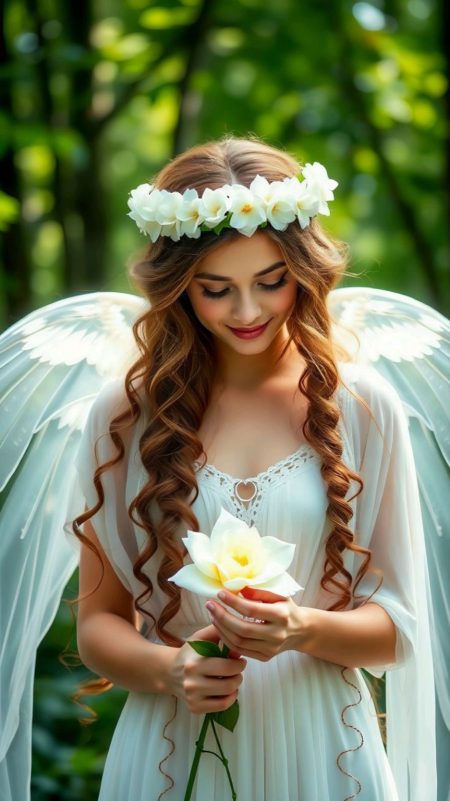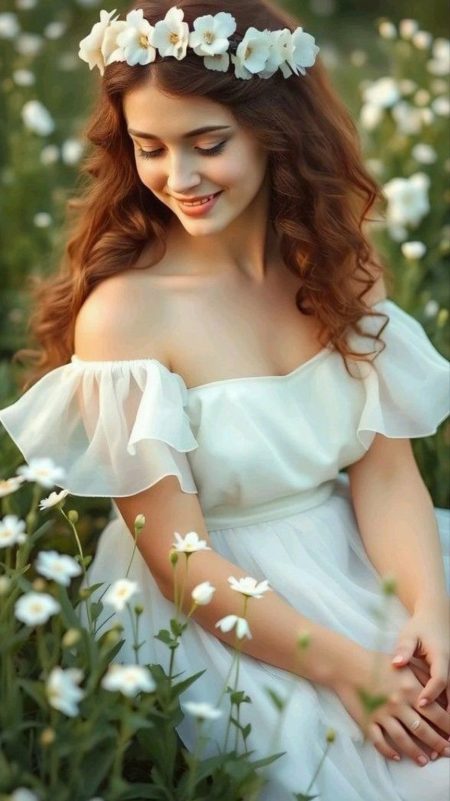Ultra-realistic fairytale princess portrait




Creating an ultra-realistic cinematic fairytale princess portrait is a blend of artistic vision, technical know-how, and careful styling. Whether you’re working with a camera or guiding an AI image generator, the goal is the same: produce a photograph-like image that feels intimate, magical, and believable. This article walks you through the creative choices, practical techniques, and finishing touches that turn a pretty idea into a breathtaking portrait.
Start by thinking of mood before anything else. Soft, romantic lighting and a gentle color palette instantly hint at fairytale storytelling. Natural golden-hour light or diffused overcast skies are ideal because they flatter skin, add a cinematic glow, and avoid harsh shadows. In AI-driven workflows, specifying lighting details—such as “soft cinematic backlight,” “golden-hour rim light,” or “diffused softbox effect”—will influence the model toward photorealistic, film-like output.
Clothing and accessories matter more than you might expect. A flowing white dress, light fabrics with delicate gathers, and off-shoulder or puff sleeves create movement and add a romantic silhouette that reads well both in-camera and in generative art. A simple floral crown or single white flower becomes an evocative prop that strengthens the fairytale narrative without overwhelming the composition. When instructing an AI, include fabric texture, sleeve style, and crown details to ensure the rendered outfit matches your vision.
Hair and makeup should remain natural and harmonious with the setting. Loose, long waves or soft curls offer a timeless, feminine look. Makeup should enhance rather than dominate: think luminous skin, subtle blush, softly defined eyes, and natural lip tones. Calling out qualities like “dewy skin,” “subtle peach blush,” or “soft smokey eyes with no heavy liner” will help achieve a believable, photorealistic finish in generated images.
The background and props complete the scene. A field of daisies, a mossy forest clearing, or a sun-dappled garden are classic fairytale environments. Foreground elements—like scattered flowers or soft grass blades near the lens—add depth and create that cinematic bokeh feeling. If you’re composing a shot with a camera, use a shallow depth of field (wide aperture like f/1.8–f/2.8) to isolate the subject and render the background into a pleasing blur. In AI prompts, specify “shallow depth of field” and “85mm portrait lens” to emulate that photographic look.
Pose and expression are where personality emerges. A direct gentle gaze into the camera can be powerful and intimate; eyes-closed poses communicate serenity and dreaminess; a shy downward glance suggests introspection. Encourage small, natural movements—tucking hair behind an ear, gently holding a flower, or reclining on the grass—to avoid stiffness. In prompts, small action cues like “lying on grass with delicate smile” or “holding a white flower and looking down” lead to more natural poses.
When crafting prompts for AI or planning a shoot, include texture and detail descriptors to push for realism. Words like “skin pores,” “fabric weave,” “individual hair strands,” “delicate flower petals,” and “fine lace detail” are helpful. They guide the rendering process toward micro-details that separate a stylized illustration from a convincing, high-resolution portrait. Balance this with broader cinematic words—“ethereal glow,” “dreamy atmosphere,” “cinematic color grading”—to retain the fairytale aesthetic.
Color grading is an underrated step that ties everything together. Subtle pastel tones, slightly warmed highlights, and gentle contrast produce a soft cinematic palette that evokes nostalgia. Avoid extreme saturation or harsh contrast—aim instead for muted highlights and warm midtones. If you’re post-processing photos, use selective color adjustments and soft curves to achieve this. For AI-generated images, mention “cinematic pastel color grade” or “soft film emulation” in the prompt.
Technical camera specifications translate well into prompts and production notes. An 85mm focal length is flattering for close portraits, offering subject isolation and natural facial proportions. Use low ISO for clean, noise-free images and a wide aperture for pleasant background separation. If you want a portrait that looks like a high-end editorial photograph, include these details in your description: “shot with 85mm lens, f/1.8, shallow depth of field, medium format film look.” These cues help the generator mimic real optical characteristics.
For photographers, lighting setups can range from simple to elaborate. A single reflector and natural window or late-afternoon sun can deliver gorgeous soft illumination. If you control the light, position it slightly above and to the side for subtle modeling across the face. For a backlit rim glow, place the light behind the subject and use a fill light or reflector in front to keep facial detail intact. In an AI prompt, phrases like “soft rim backlight with gentle front fill” will steer the result in the same direction.
Post-processing is where refinement happens. Start with basic exposure, white balance, and contrast adjustments. Then focus on skin texture preservation rather than heavy smoothing—over-retouching causes the “plastic” look. Enhance eyes and lips slightly for focal strength, but keep the overall tone natural. Add a soft vignette and slight film grain to unify the image and reinforce the cinematic feel. In AI workflows, you can request “realistic skin texture, minimal retouching, subtle film grain” to mimic this process.
If you’re using an AI generator, experiment with negative prompts and constraints to avoid common pitfalls like distorted hands, extra limbs, or unnatural artifacts. Include negative phrases such as “no watermark, no extra fingers, no cartoonish features, no text” to keep outputs clean. Also, iterate with seed values and sampling steps; small changes often produce significantly different results. Save your best outputs and use them as references for further refinement or manual touch-ups.
Compositionally, consider classic portrait framing techniques. Rule-of-thirds placement, leading lines from flowers or foliage, and foreground elements that frame the face create a sense of depth and focus. Symmetry can be beautiful for a formal, regal look, while asymmetry often reads as more candid and organic. When you write your prompt, add composition hints like “subject centered with foreground daisies” or “off-center pose with flowers framing left side” to encourage the layout you want.
Beyond the visual, storytelling is what makes a portrait memorable. Small narrative details—a slightly worn ring, a single tear of dew on a flower, a faint smile that suggests a private thought—invite viewers into the image. These details don’t need heavy exposition; they work best when subtle. Use phrases like “hint of nostalgia,” “quiet joy,” or “gentle melancholy” in your brief to inject emotional depth into the portrait.
Finally, always evaluate images with fresh eyes after a break. What felt like a perfect edit in one sitting can look over-processed or flat after stepping away. Compare variations side-by-side, check details at 100% zoom, and solicit a second opinion if possible. Whether you are producing images for social media, a client, or personal projects, thoughtful curation will elevate the work from pretty to professional.
In summary, an ultra-realistic cinematic fairytale princess portrait combines careful lighting, natural styling, textured detail, and subtle storytelling. Focus on believable textures, gentle lighting, and emotional nuance to create images that feel real and enchanting. With these principles—paired with thoughtful prompts or practical shooting choices—you’ll be able to craft portraits that look like they belong on the pages of a modern fairytale.
